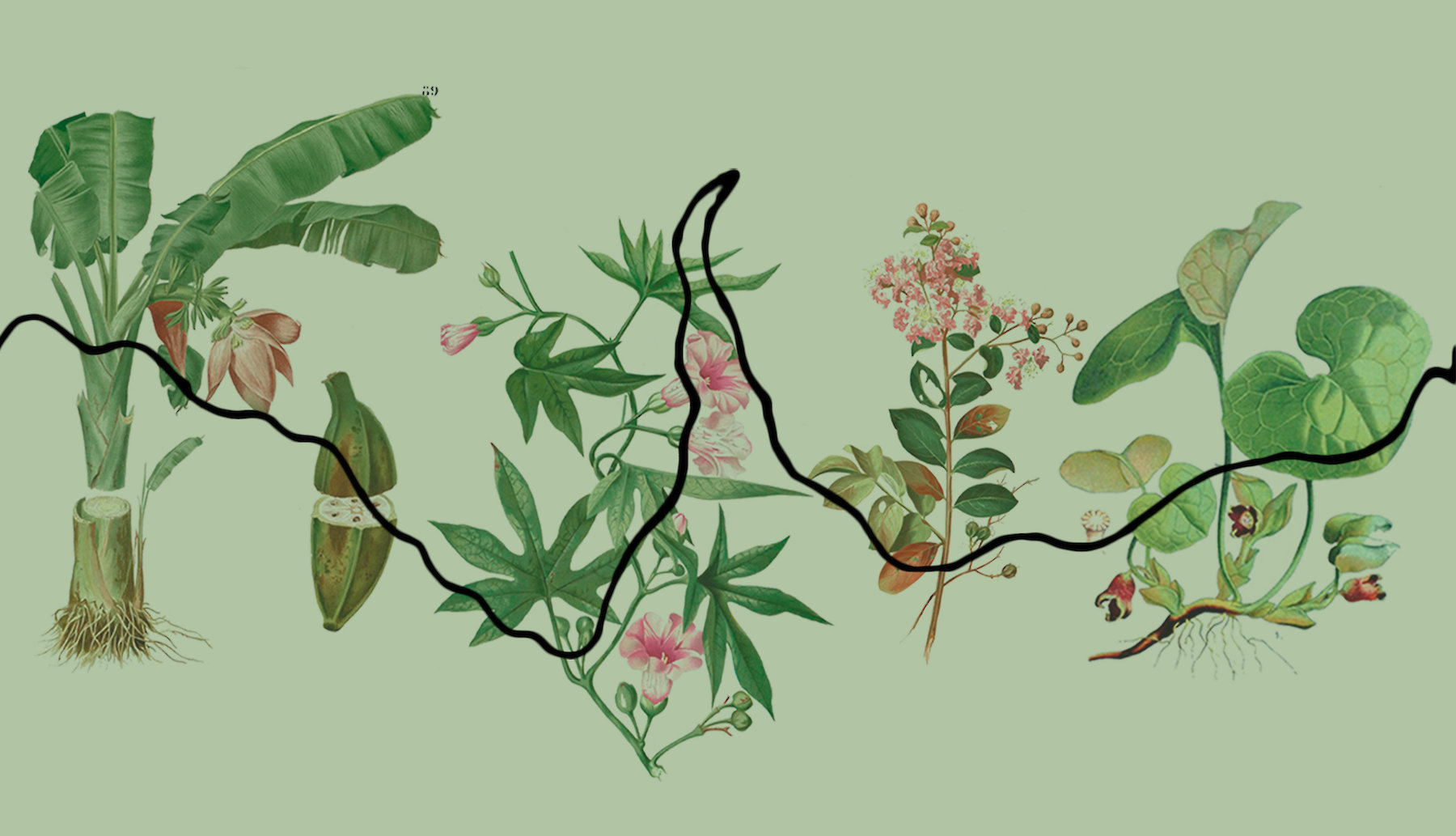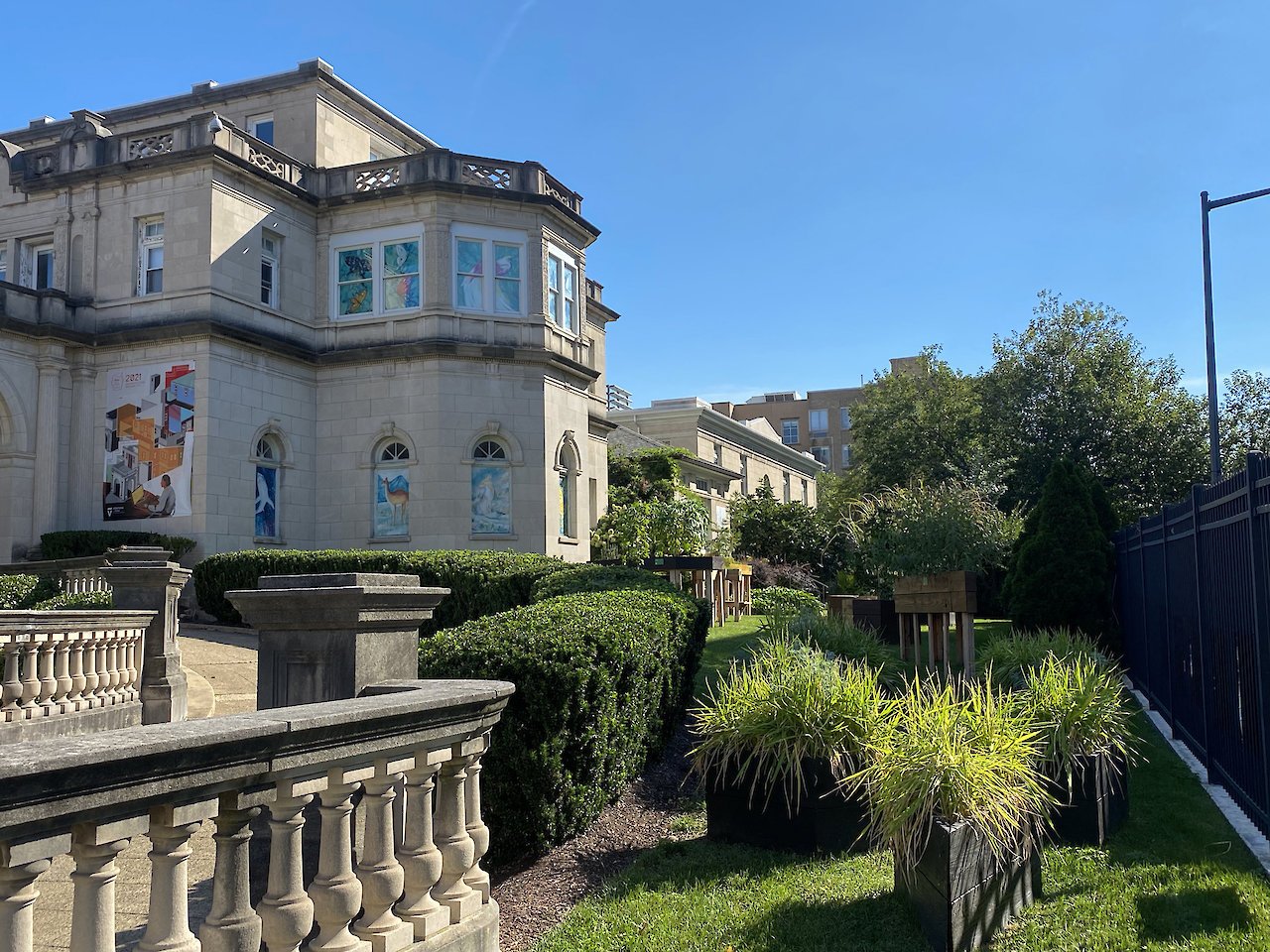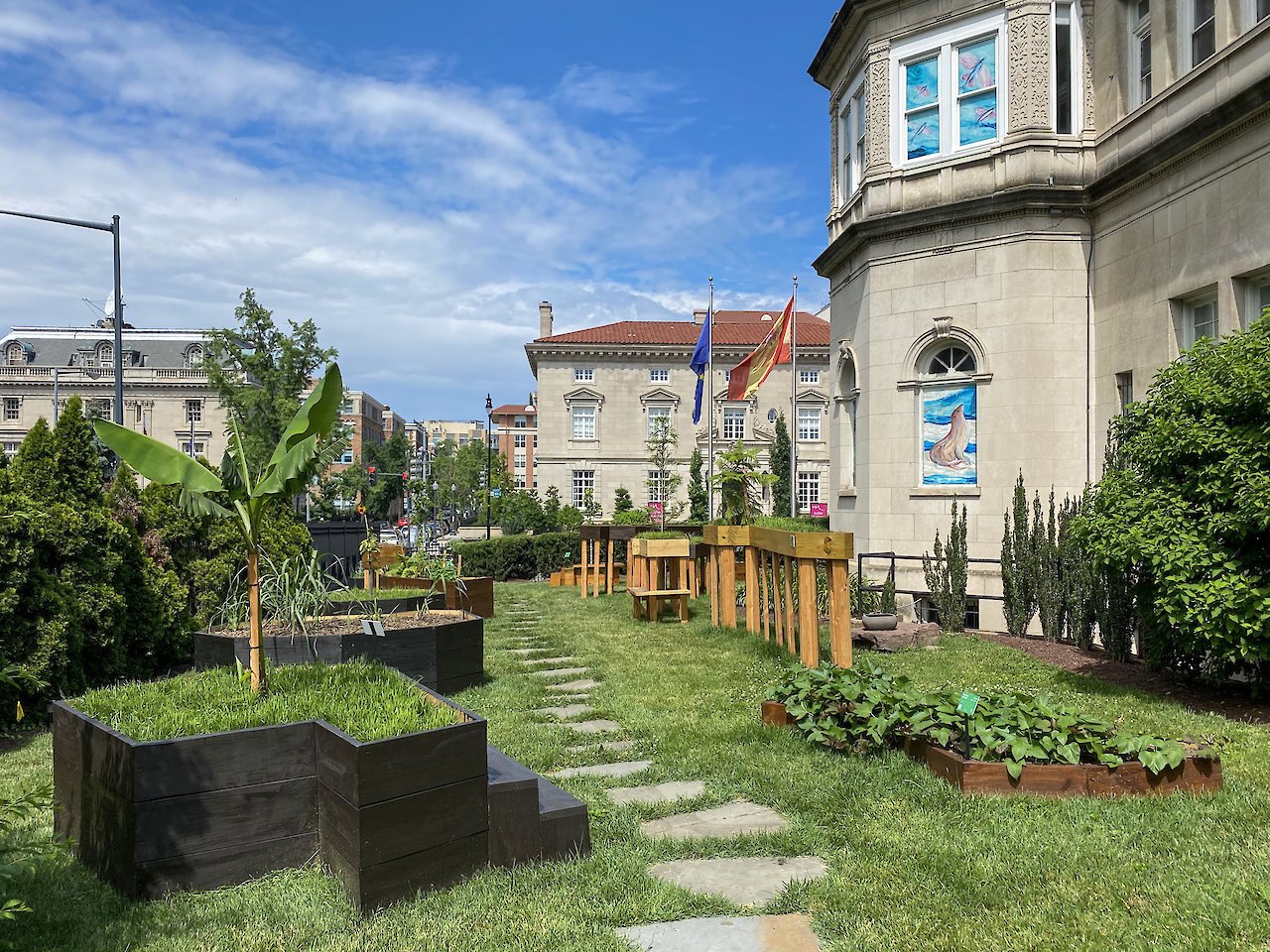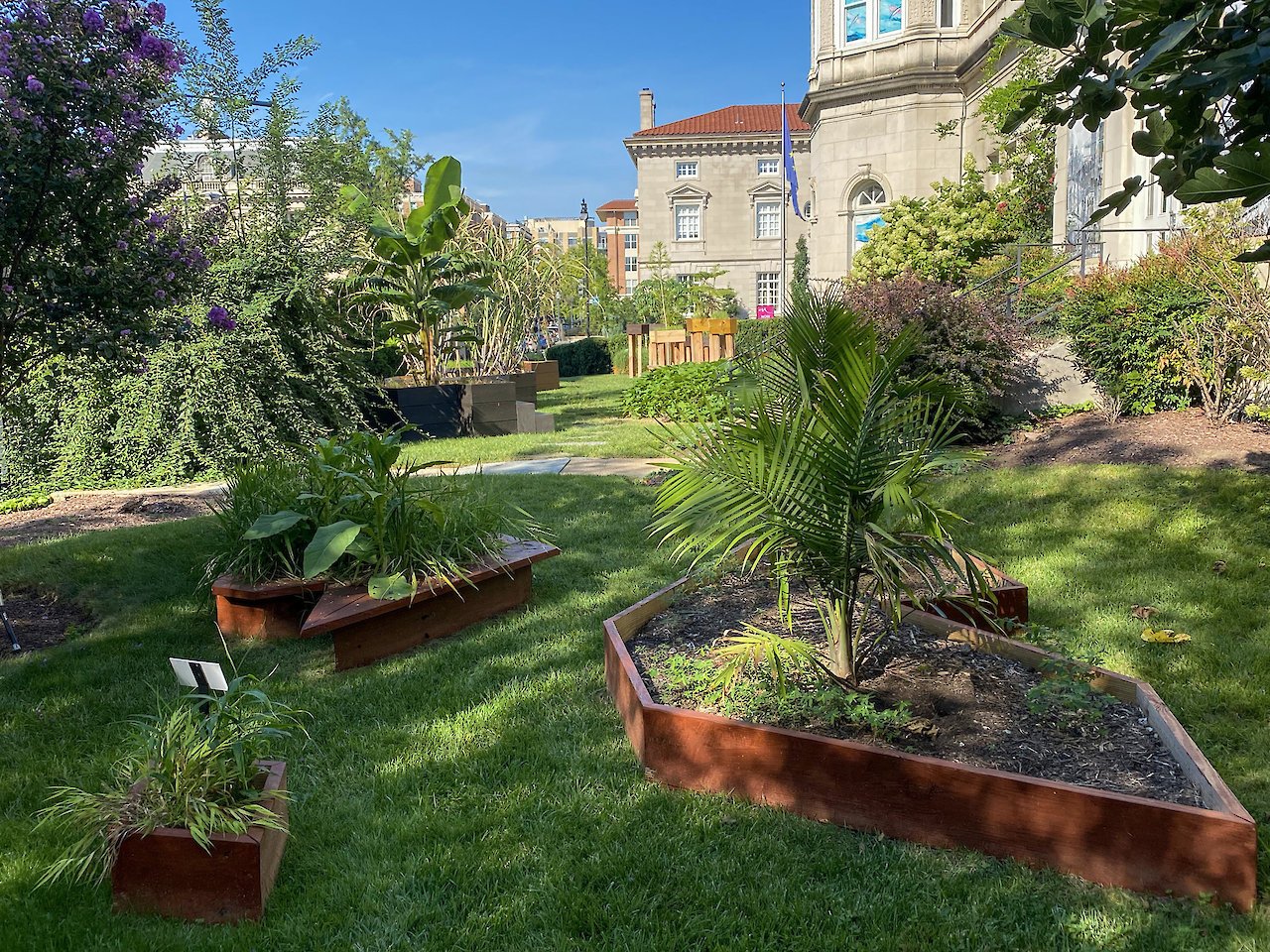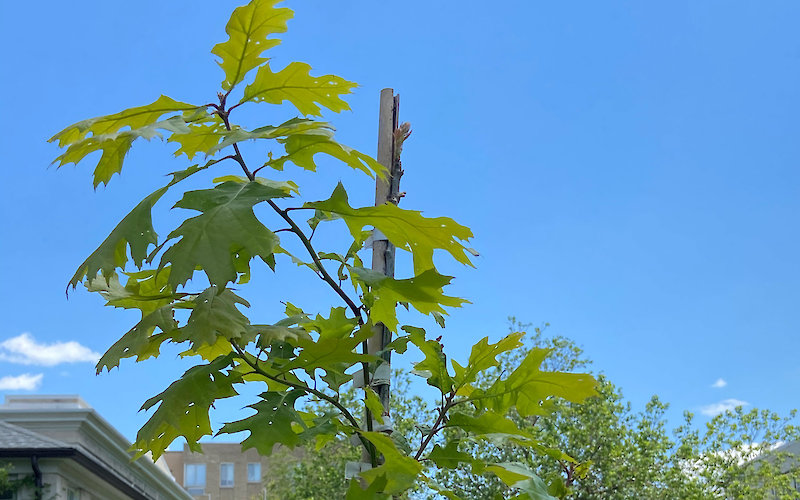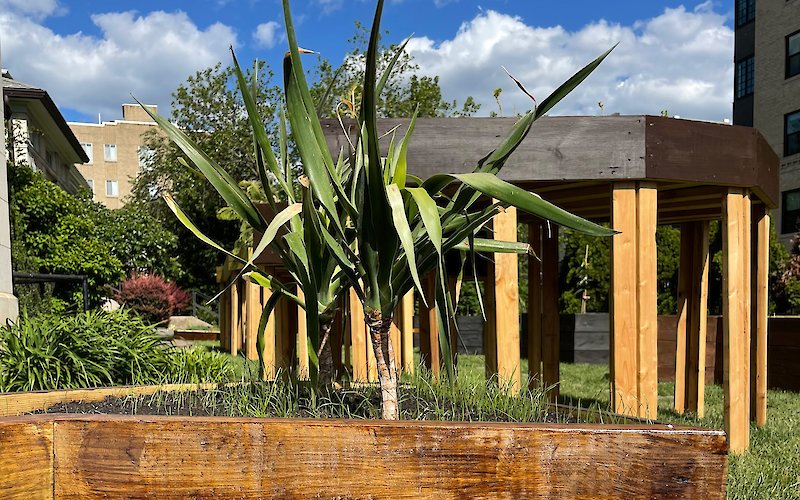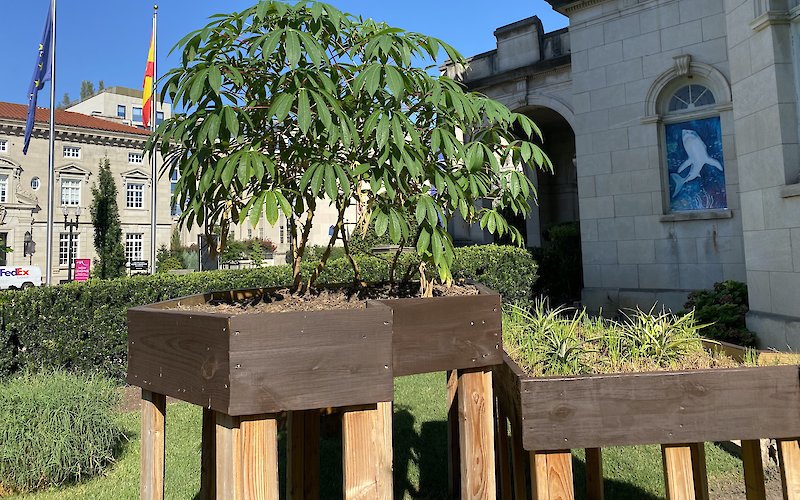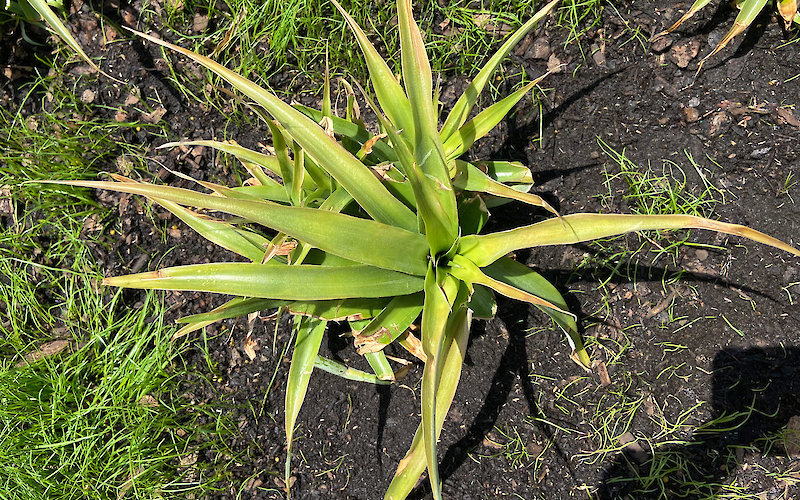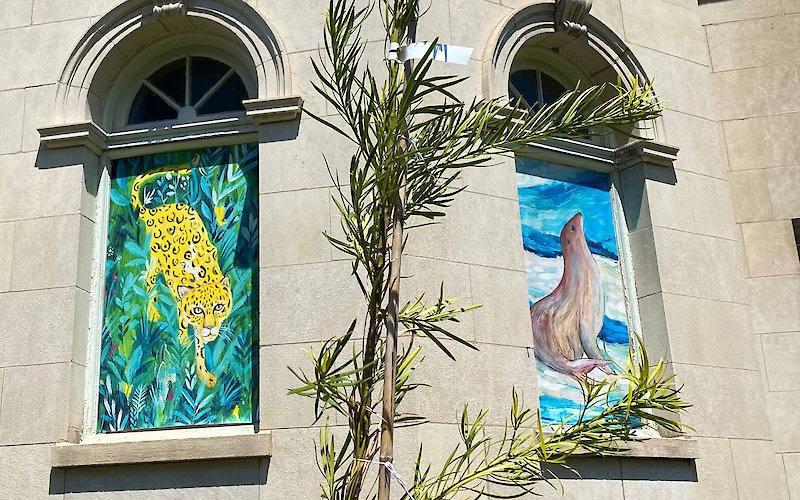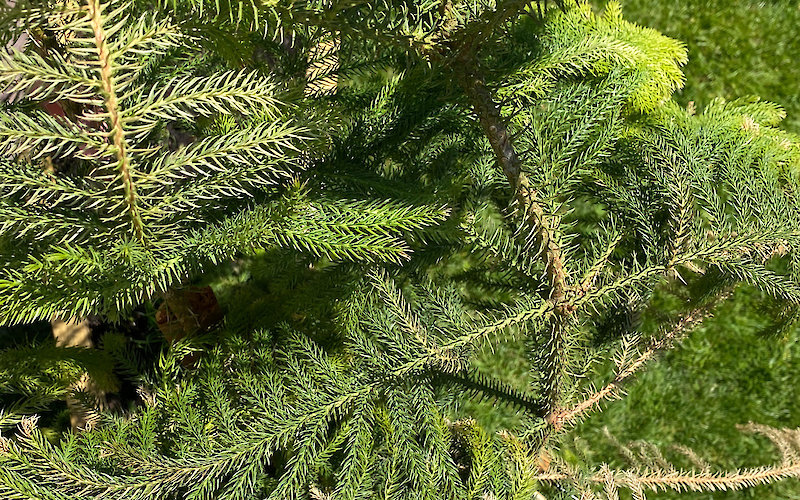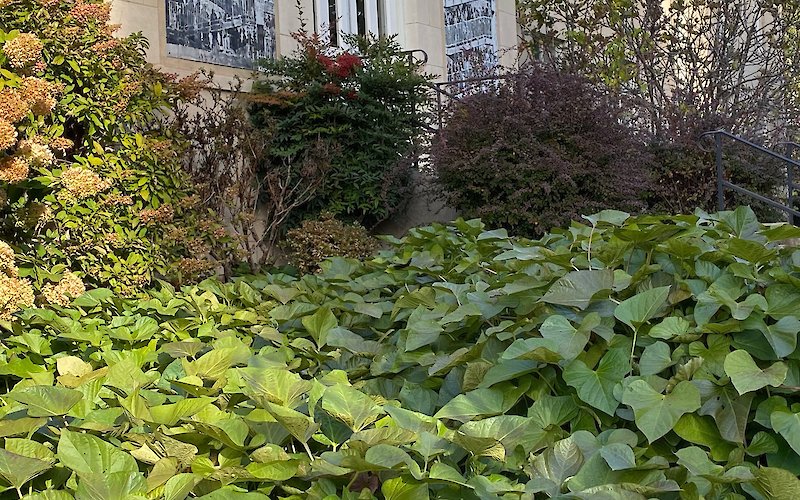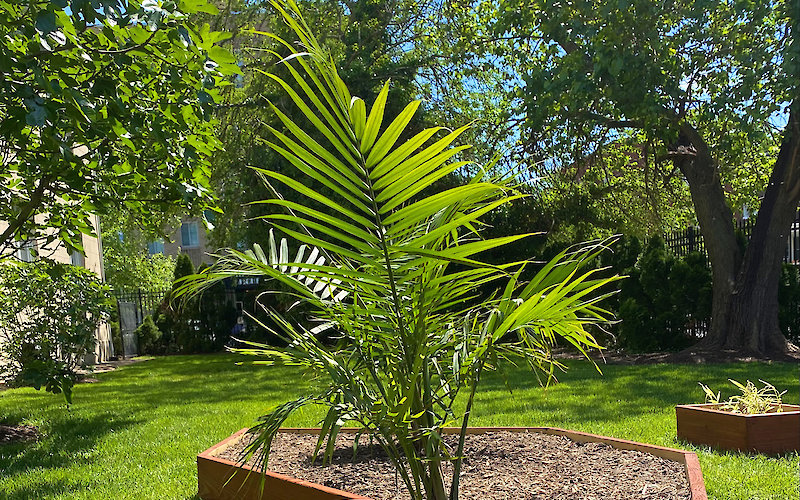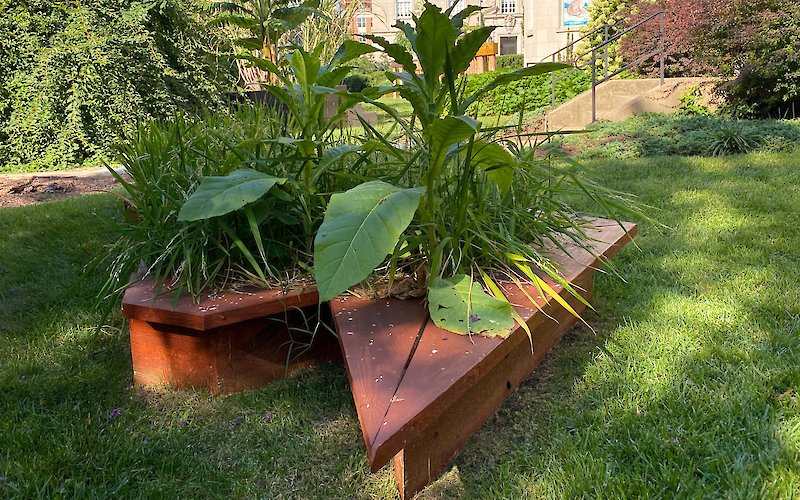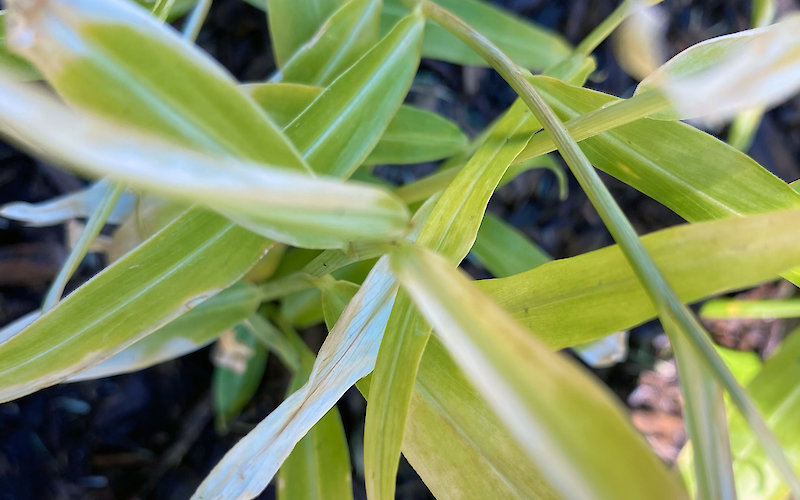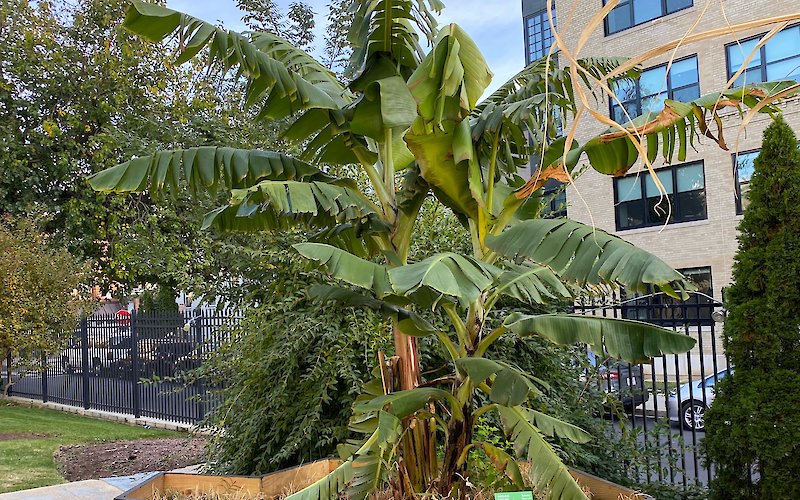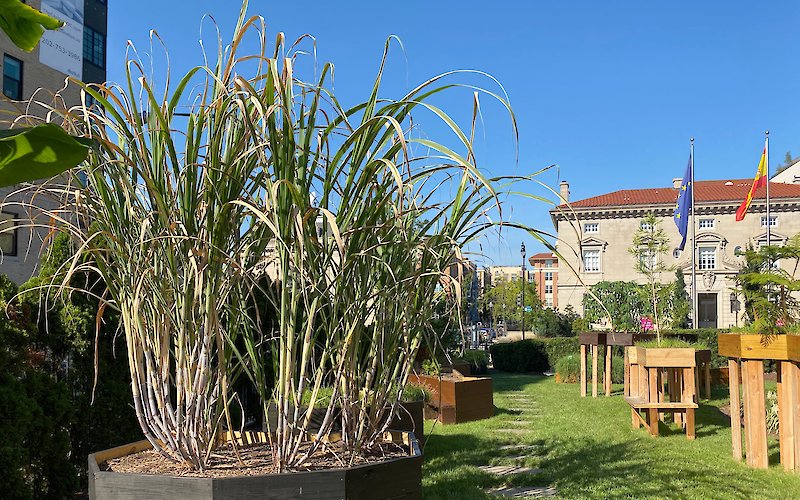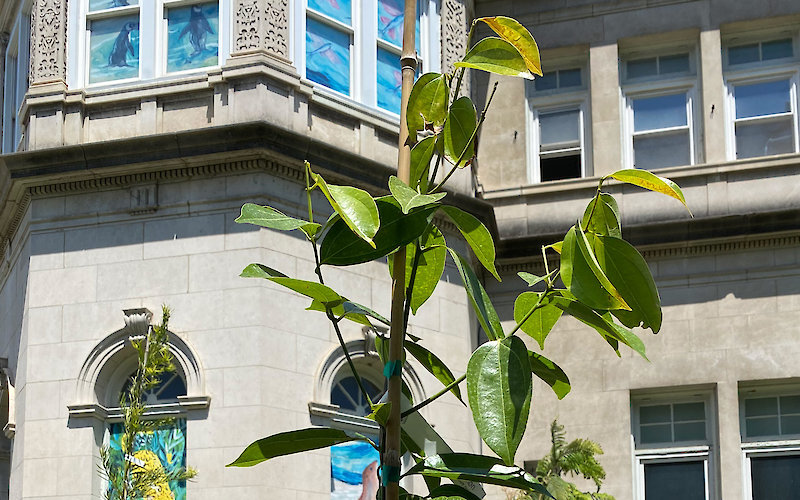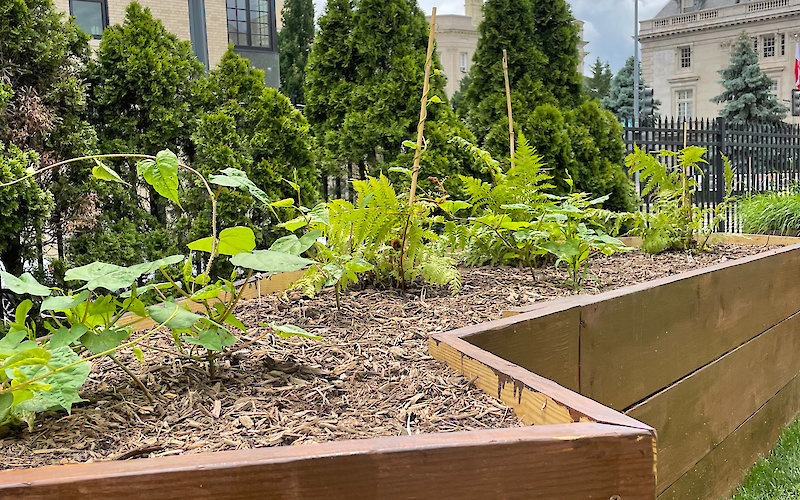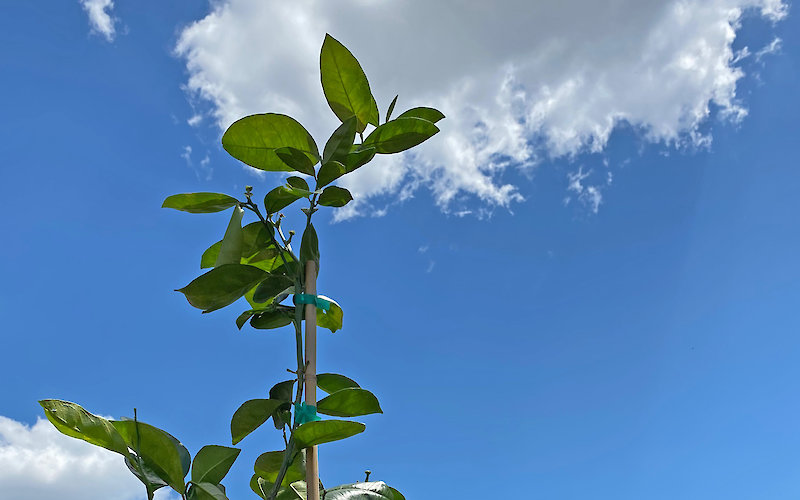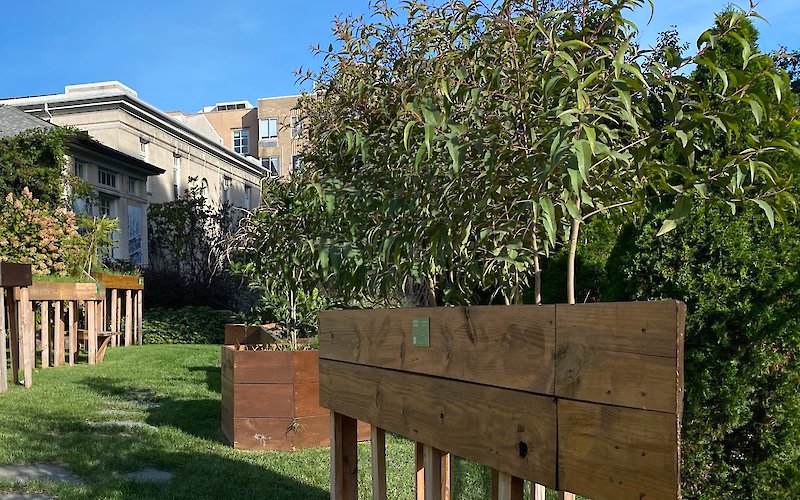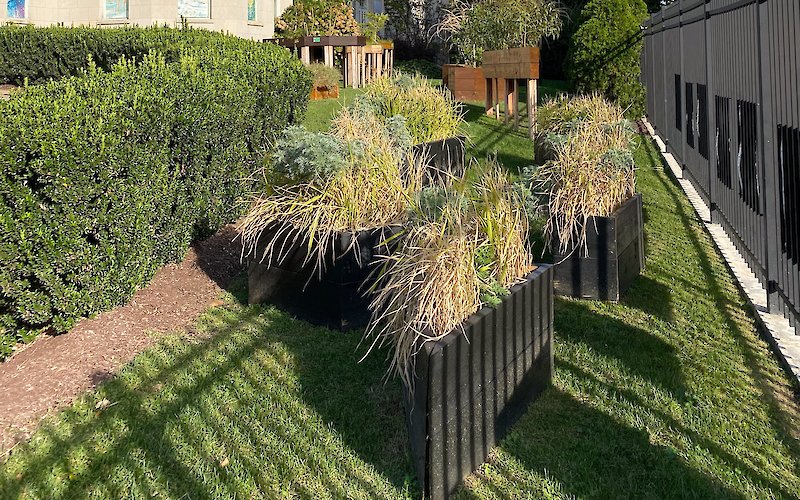On the occasion of the 5th Centenary of the first trip around the world, accomplished by Juan Sebastian Elcano and Fernando de Magallanes, Spanish artist Juanli Carrión designs a garden commissioned by the Cultural Office of the Embassy of Spain.
The garden is the centerpiece of a program of activities organized by the Cultural Office of the Embassy of Spain that began in 2020 with workshops, performances, and a series of online panel discussions presented in collaboration with the Cultural Programs of the National Academy of Sciences.
Commercial interests about clove and nutmeg were the principal motivation of Magellan & Elcano’s expedition that became the first trip around the world 500 years ago. The demand for these two spices in Europe would change the world forever on many levels: establishing the first global commercial route, connecting three continents ecologically and gastronomically, and setting the bases for our current globalized world.
About Juanli Carrión
Juanli Carrión is an artist, researcher and activist whose work unfolds in the development, research and education of community-engaged design and artistic practices. For over more than a decade his research has taken the form of art projects, publications, and curriculum development with an emphasis on social and environmental justice. He is currently focusing on the research of practices that expand beyond the art/design realm to become policies, non-profit organizations, associations, groups, or other sustainable social or political structures and practices, with the aim of translating the results into pedagogical strategies.
In 2017 he founded OSS Project, Inc., a non-profit organization whose mission is to build and support public gardens as art interventions, using urban farming, storytelling, educational programming and community building as means to address systemic and structural issues of social inequity.
His work has been exhibited in venues such as the Art Institute of Chicago, Art in General, Abrons Arts Center, BRIC, Y Gallery or BAM in the US; ARTIUM, La Casa Encendida, La Panera Art Center, MUSAC, or CentroCentro in Spain; Ex-Teresa Museum and MUPO in Mexico; Museum of Contemporary Art in Peru and National Gallery of Modern Art in India among others. Carrión has expanded his academic research participating in lectures, panels and workshops at Columbia University, Open Engagement at Carnegie Mellon University, SVA, Pratt Institute, SUNY, NYU, AIA New York, Fordham Graduate School for Social Service, Wavehill or Apexart.
Garden map
Pick a number below and navigate around the world
- 1. Seville (Spain): White Oak
- 2. Tenerife (Spain): Dragon Tree
- 3a. Rio de Janeiro (Brazil): Cassava
- 3b. Land of Verzin (Brazil): Pineapple
- 4. Port of San Julián (Argentina): Podocarpus
- 5. Cabo Deseado (Chile): Araucaria
- 6. Guam (USA): Batata
- 7a. St. Lazarus Islands (Philippines): Palm Tree
- 7b. St. Lazarus Islands (Philippines): Tobacco
- 7c. St. Lazarus Islands (Philippines): Ginger
- 8. Brunei: Banana
- 9a. Maluku Islands (Indonesia): Sugarcane
- 9b. Maluku Islands (Indonesia): Cinnamon
- 10a. Ternate (Indonesia): Tree Fern
- 10b. Tidore (Indonesia): Orange Tree
- 11. Timor (East Timor): Eucalyptus
- 12. Cape Verde: Artemisa
